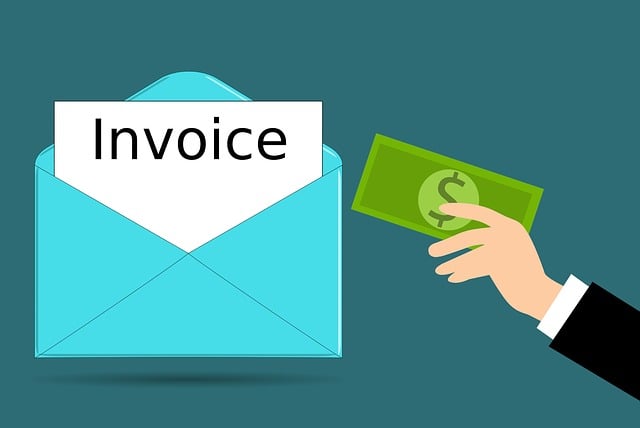Invoice factoring is a strategic solution for businesses aiming to improve cash flow instantly and streamline operations. By selling outstanding invoices to third-party factors, companies gain access to immediate funding (often within 24 hours), enabling them to meet financial obligations, invest in growth, and enhance operational efficiency. This process relieves businesses from collections management, provides data analytics for better cash flow insights, and offers a flexible alternative to traditional loans with minimal risk. To maximize profitability, businesses should focus on improving cash flow through competitive rates, strong relationships, efficient accounting practices, diversified customers, and optimized billing cycles, while regularly reviewing factoring data.
“Enhance operational efficiency and boost your cash flow with invoice factoring—a powerful tool for businesses seeking streamlined financial management. This comprehensive guide explores the benefits of this alternative financing method, from immediate cash flow injections to simplified accounting processes.
We’ll delve into how factoring can transform your business’s financial landscape, debunk common myths, and provide strategies to optimize its advantages. By understanding invoice factoring, you’ll unlock a game-changing solution for improving cash flow and fostering sustainable growth.”
- Understanding Invoice Factoring: A Streamlined Payment Process
- How Invoice Factoring Can Boost Your Cash Flow Immediately
- Simplifying Financial Management: Benefits for Businesses
- The Role of Factoring in Enhancing Operational Efficiency
- Common Misconceptions About Invoice Factoring Debunked
- Strategies to Optimize Invoice Factoring for Maximum Profitability
Understanding Invoice Factoring: A Streamlined Payment Process

Invoice factoring offers a powerful solution for businesses seeking to improve cash flow and enhance operational efficiency. This financing technique involves selling outstanding invoices to a third-party factor, effectively converting accounts receivable into immediate funding. By doing so, businesses gain access to capital more quickly than traditional banking methods allow, enabling them to meet their financial obligations and growth ambitions faster.
The streamlined payment process begins with the business submitting its invoices to the factor, who then assumes the risk of collecting those payments from customers. This relieves the business from the burden of managing collections and allows them to focus on core operations. Additionally, factors often provide valuable data analytics and reporting, giving businesses deeper insights into their cash flow patterns and customer behavior.
How Invoice Factoring Can Boost Your Cash Flow Immediately

Invoice factoring offers a powerful solution for businesses seeking to instantly boost their cash flow and gain greater financial flexibility. By selling outstanding invoices to a third-party factor, companies can access immediate funding, typically within 24 hours of submitting the invoice details. This rapid infusion of capital enables businesses to meet their short-term financial obligations more easily, such as paying bills, covering operational expenses, or investing in growth opportunities.
Unlike traditional loan options that often involve lengthy approval processes and strict collateral requirements, invoice factoring provides a straightforward and non-intrusive approach to improving cash flow. There are no complex applications or credit checks to navigate, making it an attractive option for businesses of all sizes and industries. By utilizing this financial strategy, companies can focus on their core operations, knowing that their cash flow needs are securely addressed.
Simplifying Financial Management: Benefits for Businesses

Invoice factoring offers a powerful solution to streamline financial management, providing businesses with a strategic advantage in today’s fast-paced market. By employing this financing method, companies can significantly enhance their cash flow dynamics. The process involves selling invoices at a discount to a factor, allowing businesses to receive immediate funding for outstanding accounts receivable. This swift access to capital enables enterprises to optimize operations by covering short-term expenses, investing in growth opportunities, and ensuring steady financial stability.
The benefits extend beyond improved liquidity. Invoice factoring also reduces the administrative burden of managing invoices and collections. Businesses can focus on core activities while leaving the task of following up on payments to the factor. This simplification empowers companies to allocate resources more efficiently, fostering overall operational efficiency.
The Role of Factoring in Enhancing Operational Efficiency

Invoice factoring plays a pivotal role in enhancing operational efficiency for businesses, especially those dealing with frequent transactions and a constant need to manage cash flow. By using factoring as a financial tool, companies can significantly improve their cash flow dynamics. This process involves selling invoices at a discount to a third-party funder, providing immediate access to funds tied up in outstanding debts. As a result, businesses can accelerate their payment cycles, reduce the time between rendering a service or delivering goods and receiving payment, and streamline their financial operations.
Furthermore, factoring offers a scalable solution tailored to each company’s unique needs. It provides flexibility, allowing enterprises to avoid long-term debt obligations and interest payments associated with traditional loans. This approach is particularly beneficial for small and medium-sized enterprises (SMEs) that often struggle with cash flow management due to delayed payments from clients. Factoring enables these businesses to maintain a steady financial flux, enabling them to invest in growth opportunities, optimize operations, and stay competitive in their markets.
Common Misconceptions About Invoice Factoring Debunked

Invoice factoring is often surrounded by myths and misconceptions, deterring businesses from exploring this financial strategy. One common misconception is that it’s only suitable for cash-strapped companies or those in distress. However, this isn’t true; many thriving businesses use invoice factoring to improve cash flow and optimize their operations. By converting outstanding invoices into immediate funds, companies can gain access to capital more quickly than traditional banking methods allow.
Another false belief is that factoring is an expensive and risky endeavor. In reality, when structured correctly, it can be a cost-effective solution with minimal risk. Factoring companies typically charge a fee based on the value of the invoices being purchased, which is a more transparent and flexible approach compared to interest-based lending. This makes it an attractive option for businesses seeking efficient and reliable funding without burdening their financial health.
Strategies to Optimize Invoice Factoring for Maximum Profitability

To optimize invoice factoring for maximum profitability, businesses should first focus on improving cash flow. This involves carefully selecting factoring companies that offer competitive rates and flexible terms tailored to your industry. By negotiating better terms and maintaining strong relationships with these providers, you can minimize costs and maximize the amount of immediate funding received against your invoices. Additionally, implementing efficient accounting practices, such as automating invoice generation and payment processing, streamlines the entire process, reducing administrative burdens and potential errors.
Further enhancements can be achieved by diversifying your customer base and optimizing billing cycles. Targeting a mix of clients across different sectors can stabilize cash flow, as some industries may experience seasonal fluctuations or delayed payments. Adjusting billing cycles to align with your customers’ payment habits also ensures a consistent influx of funds. Regularly reviewing and analyzing factoring data can uncover trends and areas for improvement, enabling you to make informed decisions that drive profitability.






